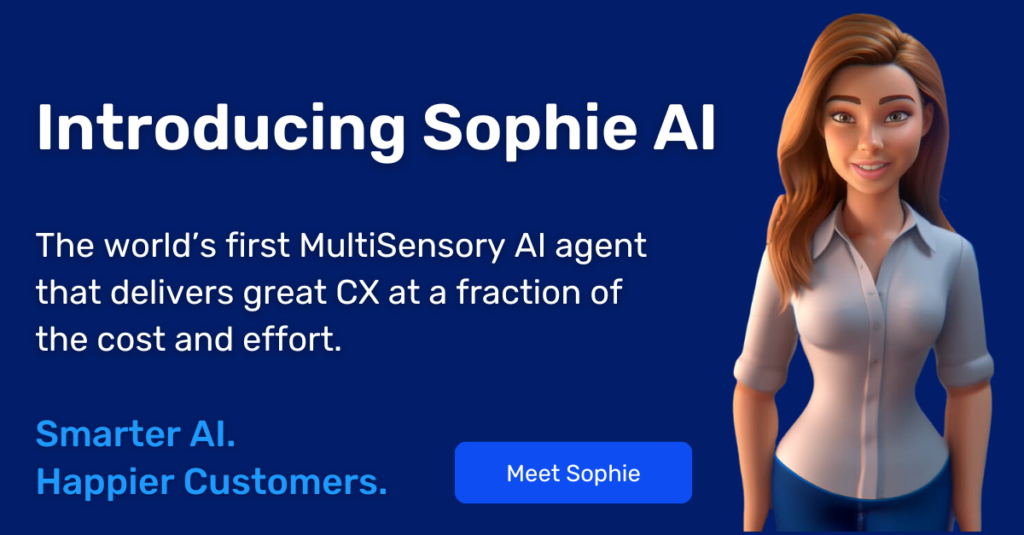Contents
With the advances in digitization and the effects resulting from the pandemic, customers have become demanding and expect attendance and answers faster than ever, at the expense of leaving service providers and sharing complaints through social media connections which affects their reputation. Customer self-service has therefore become a necessity rather than a luxury to provide and maintain a positive customer experience.
Artificial intelligence represents a machine’s evolving ability to learn from past experiences or interactions, enabling them to perform more complex tasks over time. With AI, machines can evolve from carrying out basic communication with customers to optimizing a customer interaction, such as finding the correlation between a problem and its solution. With these powerful intelligence capabilities, AI self service is poised to completely transform customer care.
How is AI Applied in Self-Service?
While still evolving, AI has demonstrated value throughout the customer journey, enabling proactive self customer service in the form of conversational platforms aimed at consumers, such as chatbots, IVRs, visual bots, etc. AI has also powered decision support tools, which help human agents present customers with relevant information in real time with the goal of making the best decisions and providing the right information to consumers.
This process is already embedded into most customer service functions, including:
- Classification – the ability to identify the problem presented by the customer
- Routing – the task of transferring the case to the most suitable channel (automated or human) to achieve the best resolution
- Resolution – the ability to solve the customer’s problem, whether it is filling out a form, rebooting a device or dealing with a canceled flight.
Benefits of AI in Customer Self-Service
AI enhances the efficiency of self-service operations while also providing a more engaged customer experience. Specifically, AI brings the following benefits to customer self-service:
More Service, Lower Cost
With customer expectations rising, AI enables companies to expand their self-service offerings cost-effectively. For example, intelligent virtual assistants are available 24/7, eliminate the need for customers to wait in a queue, and adequately address simple customer tasks, such as paying a bill or processing a return.
Alleviates Short-Staffing in Contact Centers
There is a shortage of qualified agents. Over 41% of companies say they need to increase the number of contact center agents in the next year, but 35% say they are challenged with finding agents with the experience they need. AI-enhanced self-service can take care of simple, repetitive operations while freeing up human agents for more complex tasks.
Improve Business Metrics
Self-service AI contributes positively to a wide range of KPIs. From revenue generation to cost optimizations to customer satisfaction, AI has been proven to deliver results. For example, customer sentiment ratings increased 57.3% among companies using AI in their CX initiatives.
If your company is looking to invest in disruptive technology that exploits market dynamics and provides a competitive edge, look no further than AI. However, it is vital to implement AI in the right way, and to follow best practices for AI self service deployment in your customer care.
8 Ways To Deploy AI Self Service for Customer Care
Deciding to invest in a disruptive technology like AI that has been proven to provide a competitive edge is easy. It’s implementing the technology into your self-service offering that can be daunting. Here are eight best practices for getting started with AI-driven self-service.
Determine the Self Service Strategy
Every good solution starts with a plan. Decide what business problem the conversational AI assistant is being built to solve, and clarify the desired results and relevant KPIs. Some organizations may want to reduce inbound calls to human agents, others may wish to increase outbound calls to head off product returns, while still others may want the conversational AI assistant to make it effortless for customers to access information about the company. What is the goal of the AI self-service implementation for your organization? Is it cost reduction? Higher revenue goals? Decreased agent workload? Focus on the business priorities and develop the AI’s capabilities to support this objective. Of course, make sure your organization does not lose sight of its goal as development gets underway.
Find Low-Hanging Use Cases
Choose the right use cases by looking at which business processes can be automated with the AI assistant and consider each in terms of volume and complexity, such as whether the task is informational only or transactional and requires interaction with other company systems. Collect data from existing repositories, including FAQs or helpdesk macros to find common inquiries. It is also essential to assess the level of engagement needed with a customer, such as whether a back-and-forth dialogue will be required to find the resolution. Most organizations are advised to start simply by keeping the task informational only and limiting the level of engagement. Ongoing analysis will help fine-tune the self-service AI use cases and uncover any gaps.
Design the AI Assistant’s Personality
When designing the conversational AI assistant’s responses, don’t go for dry or boring. Humanize the self-service AI experience by aiming for high-quality dialogue with character. Whether witty or even slightly cynical, having an AI assistant that can engage the customer will bring them back repeatedly, furthering the adoption of your organization’s AI-powered self-service offering.
Train for Accuracy
When training the algorithms, make sure that the activities are centralized and not developed in a silo. Key staff should be involved in the training to ensure all the critical points are covered. Keep in mind that your AI assistant is meant to enhance your human customer service agents and not replace them. Use the manpower you have to best position your AI assistants to help scale your customer support capacity by automating routine inquiries and tasks.
Personalize Interactions
AI can use the customer’s historical transactions to customize every interaction. As self-service becomes more sophisticated, companies can build relationships with their customers by referencing past communications or making a suggestion. For example, rather than simply stating the return policy, the system can tailor the response for the specific product purchased.
Analyze Performance Regularly
Once the AI assistant is deployed, the organization cannot rest on its laurels. It is critical to measure its performance to drive improvements. It’s not enough to analyze whether the original business case is being met; rather, it is important to integrate performance metrics with other customer care center KPIs, such as call deflection rates, total cost per contact, fulfillment speed, customer satisfaction and, of course, self-service success rate. Develop detailed mid-term targets for scoping your virtual agent, and ensure your goals have the support of top-level management. The transformation to self-service AI is a major undertaking and must be treated as such.
Enhance Your Virtual Assistant’s Capabilities
Once the basics are covered, your customers are using the AI assistant and you’re seeing ROI, it is time to expand and enhance the capabilities of your AI in customer self-service offering. Consider enabling the AI assistant to answer a text message, suggest a product for purchase, or find the customer the best rate available. Implementing Computer Vision AI gives your chatbots the power of sight so they can handle more use cases. If brands can use Computer Vision to see issues and understand customers individually, they can deliver more personalized marketing, sales, and service.
Drive Adoption Through Targeted Marketing
Aside from bot’s service performance, another area to measure is the growth of customer uptake. To achieve optimal AI-powered self-service adoption, your company must get the word out. An ongoing marketing campaign should stress the availability of the AI assistant and the benefits of using it. Agents themselves can be the chatbot’s ambassadors by letting their customers know that they could have accomplished the task at hand in self-service.
Looking Ahead Towards An AI-Driven Customer Self Service
Improving the customer experience is an ongoing process. Research shows that implementing the right customer self-service platform in contact centers reduces costs and increases operational efficiencies. Simple online FAQs are giving way to powerful AI automated systems that empower agents and improve the customer service process at scale. These systems enhance today’s contact centers in multiple ways — from true self-service functions that deliver an unprecedented level of speed, personalization and efficiency to hybrid solutions that augment the human agent’s performance. Finally, if your organization is contemplating whether now is the time to implement AI in your self-service offerings, consider Gartner’s data showing that by 2025, companies that embed AI in their customer engagement center platforms will increase their operational efficiency by 25%. The time to act is now.







